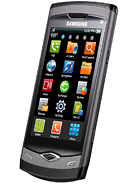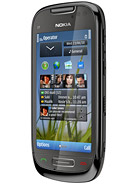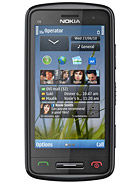Samsung S8530 Wave II review: Riding the wave
Riding the wave
Samsung Dive locates your device, remote wipes it
Competition between phone makers is getting really heated, so they're offering more and more free services to lure in customers. Samsung Dive is a prime example - it's a phone finder/remote wipe service, something which used to be a premium, corporate-centric feature back in the day.
The officially supported devices currently include the Samsung Galaxy S and Galaxy S II, along with the Galaxy Tab 10.1 and Tab 8.9 and the Samsung Wave. That's it, even the Galaxy S Plus isn’t listed. An exception we found is that the Samsung Wave II is supported too even though it's not on the list.
The star of the show here is the Remote Controls feature (actually, it's the only feature). It can locate your phone or you can set it to track the phone for 12 hours on, recording its position every 15 minutes. If you’ve only misplaced your phone, say, it’s behind the couch or your dog’s been using it as a bite toy (true story!), there's an option to ring the phone out loud too.
And if it turns out that the phone isn't in the house you have the option to lock the phone, wipe its memory and check the call logs to see if there were any calls made from it.
Locking the phone lets you enter a message to display on the device (up to 100 characters) and you can enter a phone number, which will be the only number callable from the locked phone (you'll also get an SMS to that number if the SIM card is changed). A 4-digit PIN is also required, which can later be used to unlock the phone.


Ringing the phone is your first option • It's good to lock the device if it's not at home
Keep in mind that if you choose to wipe the device, you'll no longer be able to use Samsung Dive on it. You can re-register if you find it, but tracking will no longer work, which means remote wiping is your last resort.


Wiping the device clears all its data and disables Dive • Check the Call log first
When trying to locate your device, you have two options - Find my phone and Track my phone. They may sound alike, but they do differ a bit. Track my phone records the phone's location in 15-minute intervals over a period of over 12 hours and plots the locations on the map (Google Maps is used).
But, for it to work, the phone needs to have a GPS lock - the Cell-ID and Wi-Fi positioning won't cut it. So, if the phone is in a building or in another area with poor GPS signal, tracking won't work.
Find my phone works fine with the less accurate options but it only shows the phone’s current location and it won't record past positions. The nice thing is that even if all location options were set to off before the handset was misplaced, those will be enabled automatically as soon as you start looking for it.
Unlike HTCSense.com, Samsung Dive is purely for locating your device or remote wiping it. There are no options to view/manage contacts or messages or anything like that.
Final words
If you have the feeling the Wave II came out of nowhere you’re not alone. This is not your usual upgrade – it’s an emergency response to what might one day be known as the 2010 SuperAMOLED crisis. Just kidding really, but we guess it always helps to keep good humor when things don’t go quite as planned.
In a nutshell, the difference between SuperAMOLED and Super (Clear) LCD is about the same as that between Superman and Super Mario. The major novelty is in fact a major liability for the Wave II and it’s not the phone’s fault. A 3.7” Super Clear LCD touchscreen can’t match a 3.3” Super AMOLED but Samsung had no choice but try and make this work. The Bada OS is by the way not the only casualty of the AMOLED shortage.
So yes, we do think losing the SuperAMOLED screen was the worst thing that could happen to the Wave II. But in all honesty, they did try to make the whole thing less painful. Making the screen bigger seems the right thing to do. And other than the screen, it’s the same phone with the whole set of top notch features intact.
You get the same 5 megapixel still camera and HD video recording and a complete connectivity package including Wi-Fi b/g/n, Bluetooth 3.0 and TV out. There’s the impressively fast CPU and premium finish. And not least, the Bada OS has just been updated to v1.2.
The Wave II is a solid package but it sure needs every bit of ammo to stand its ground. Nokia is a growing threat on the touchscreen field and some of their latest smartphones will want a piece of Wave’s market. The Symbian^3 powered Nokia C7 and Nokia C6-01 boast AMOLED displays, take HD videos and are just as well connected as the Waves. They have access to more apps too.
As for the Android crowd, that’s where the choice is even bigger. The top-rated droids are too much for the Wave II to handle perhaps but with a price tag like that (350 euro) it's aiming at the high-end, that's for sure.
Smartphones such as the HTC Desire, the Sony Ericsson XPERIA X10 and the Motorola MILESTONE XT720 will probably be among the main considerations.
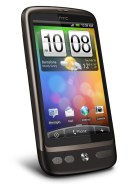
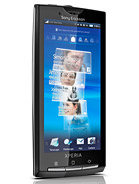
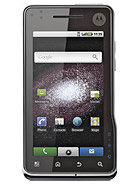
HTC Desire • Sony Ericsson XPERIA X10 • Motorola MILESTONE XT720
It seems the Wave II is well out of its league against Windows Phone 7. AMOLED screens or not, they’re just too expensive. Maybe the likes of the HTC Trophy and the LG Optimus 7 come close enough. And with Microsoft starting from scratch, the two platforms might just have more in common than you might think.
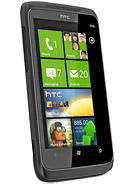
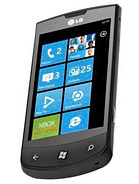
HTC Trophy • LG E900 Optimus 7
A fact’s a fact, the Wave II is not here to build on the positive momentum, to maximize the original Wave’s potential. It’s an emergency substitute, a late change of game plan. Samsung will most likely continue to promote their Bada OS. Only they’ll have to regroup and start fresh under a new flagship.
Reader comments
- Anonymous
- 15 May 2018
- fpX
is it possible to install playstore in it,
- 30 Jun 2016
- rXg
- loverstone05
- 06 May 2016
- t7X
I well look the prices all the samsung phone?

